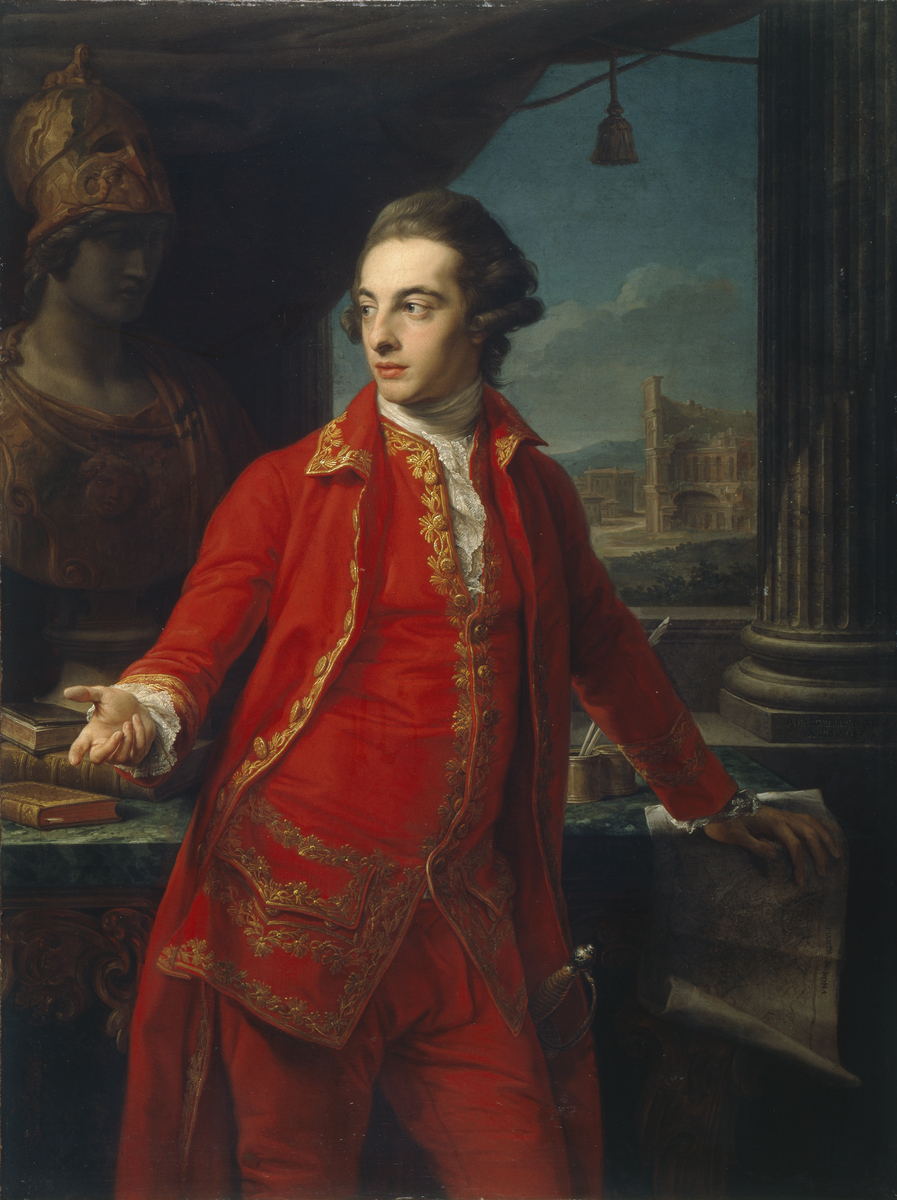Sir Gregory Page-Turner
Summary
Shortly before this portrait was painted in Rome, Gregory Page-Turner succeeded to his father's title, and inherited the fortune and estates of his great uncle. His Grand Tour - a trip for young gentlemen across Europe to study art, history and politics - was therefore lavish and comprehensive, which Batoni captures vividly. Page-Turner's fashionable scarlet outfit was of a sort popular on the Tour. A well-thumbed map of Rome, a view of the Colosseum and a bust of Minerva (goddess of wisdom and, in Rome, also of war) confirm his knowledgeable, appreciative presence in the city, while his elegant, slightly swaggering pose, loosely adapted from the Apollo Belvedere, further suggest his refinement and self-assurance. The marble bust is a studio prop that appears in at least four other Grand Tour portraits of English sitters by Batoni, alluding not only to their roles as collectors and connoisseurs of classical art, but also to their right to the spoils of war and to rule through military prowess. Pompeo Batoni was born in Lucca and trained first with his father, a goldsmith. He moved to Rome in 1727, where he was initially apprenticed to Francesco Fernandi, called Imperiali (1679-1740), then to Sebastiano Conca (c. 1680-1764) and Agostino Masucci (1691-1758). He had many commissions for altarpieces, and for religious, historical, mythological and allegorical paintings, although he remains best known as a portraitist, notably for his numerous portraits of Grand Tourists in Rome.
Display Label
Grand Tour and Grand Style The Influence of Travel Improvements in European travel during the 1700s had a wide-ranging impact on British culture. A particularly significant influence was the Grand Tour, which became almost obligatory for young gentlemen. Grand Tourists were led across Europe by tutors to study art, history and politics for two or three years. The Grand Tour focused on Italy, particularly Rome, and often incorporated new archaeological sites such as those at Herculaneum and Pompei, near Naples. Ancient antiquities were heavily trafficked across Europe and continental works of art flooded into Britain. A period of especially active collecting took place between the end of the Seven Years War in 1763 and the rise of Napoleon in the 1790s. As more artists and designers also visited the continent their work became increasingly informed by travel. The serious themes of classical antiquity and European art led to a new departure in painting called the Grand Style. This championed classical, historical or literary subjects, and inspired radical changes in portraiture and landscape. Widespread interest in Greek and Roman remains also fostered fresh interpretations of ancient designs by pioneers of decorative art such as Josiah Wedgwood.
Object Name
Sir Gregory Page-Turner
Creators Name
Date Created
1768
Dimensions
Canvas: 134.5cm x 99.5cm
Frame: 153.8cm x 119cm
accession number
1976.79
Place of creation
Rome
Support
canvas
Medium
oil paint
On Display
[G13] Manchester Art Gallery - Gallery 13
View all
Legal
© Manchester Art Gallery

